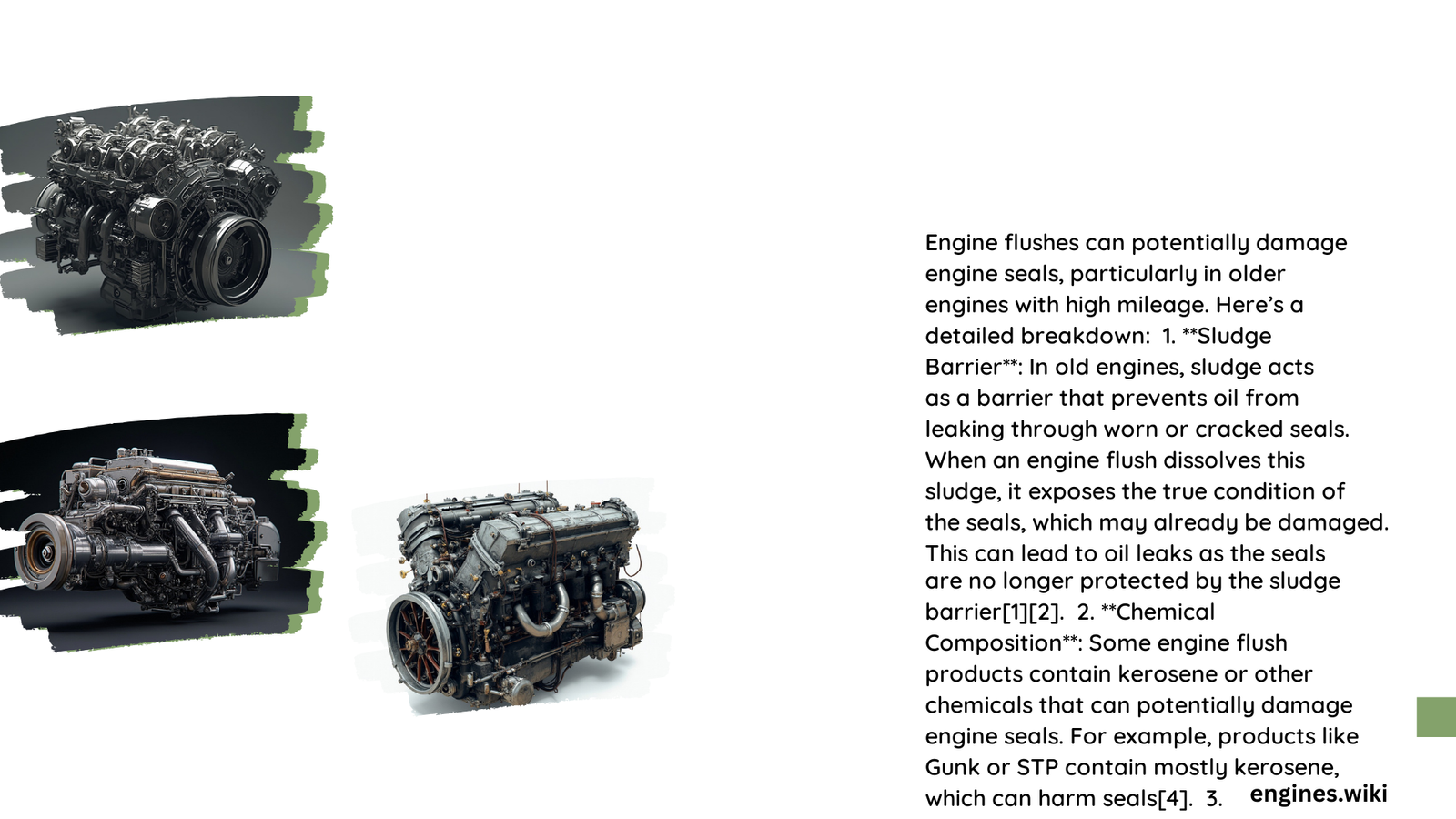Engine flushes are a controversial topic in vehicle maintenance. While they can clean out sludge and deposits, there’s concern about potential damage to engine seals. This article explores the relationship between engine flushes and seal integrity, examining chemical interactions, empirical data, and best practices to help vehicle owners make informed decisions about this maintenance procedure.
What Are the Chemical Compositions of Engine Flushes?
Engine flush products come in two main types:
- Petroleum-based flushes
- Synthetic flushes
Petroleum-based flushes often contain harsh solvents like kerosene or mineral spirits. These can be aggressive on engine seals and gaskets, potentially softening and degrading rubber and silicone materials.
Synthetic flushes, on the other hand, typically use detergents rather than solvents. They’re generally milder and pose less risk to engine seals.
How Do Engine Flushes Interact with Seal Materials?

The interaction between engine flush chemicals and seal materials can be complex:
- Solvent-based flushes can dissolve deposits that may be holding aged seals together
- This dissolution can lead to immediate leaks once the deposits are removed
- Synthetic flushes are less likely to cause this issue due to their milder formulation
Are There Case Studies on Seal Leaks After Engine Flushes?
While comprehensive databases of specific case studies are lacking, several patterns emerge:
- High mileage vehicles are at higher risk of seal damage from engine flushes
- Older vehicles or those with known seal issues should avoid engine flushes
- Vehicles exhibiting serious engine trouble (knocking, tapping, overheating) may be more susceptible to seal damage from flushes
What Are the Potential Costs of Seal Damage?
If an engine flush reveals or causes seal damage, repair costs can vary widely:
- Minor seal replacements: A few hundred dollars
- Major engine damage from oil leaks or clogged passages: Several thousand dollars
How Do Engine Flushes Affect Gasket Integrity?
While specific failure rates aren’t available, it’s well-documented that:
- Solvent-based engine flushes can increase the risk of gasket failure
- Compromised gaskets are more likely to fail after an engine flush
- Synthetic flushes pose less risk to gasket integrity across different engine types
What Are the Best Practices for Using Engine Flushes?
To minimize the risk of seal damage when using engine flushes:
- Choose synthetic, detergent-based flushes over solvent-based products
- Always follow manufacturer recommendations for the specific flush product
- Avoid engine flushes on high-mileage vehicles that have never had one before
- Perform flushes as part of regular maintenance, but only when necessary (e.g., when switching to a new type of oil)
Can Engine Flushes Be Beneficial?
Despite the potential risks, engine flushes can offer benefits when used correctly:
- Removal of sludge and deposits
- Improved engine performance
- Better oil circulation
However, these benefits must be weighed against the potential risks, especially for older or high-mileage vehicles.
What Are the Alternatives to Engine Flushes?
For those concerned about seal damage, alternatives to engine flushes include:
- Regular oil changes with high-quality oil
- Use of oil additives designed to clean engines gradually
- Shorter oil change intervals for older or high-mileage vehicles
Conclusion
While engine flushes can be beneficial for some vehicles, they do pose a risk of damaging seals, especially in older or high-mileage engines. The key is to assess your vehicle’s condition, choose the right product if you decide to flush, and follow best practices to minimize risks. When in doubt, consult with a professional mechanic to determine the best course of action for your specific vehicle.
References:
1. Car Engine Flushing: A Complete Guide for Car Owners
2. Is An Engine Flush Good Or Bad?
3. Is an Engine Flush Good or Bad?
